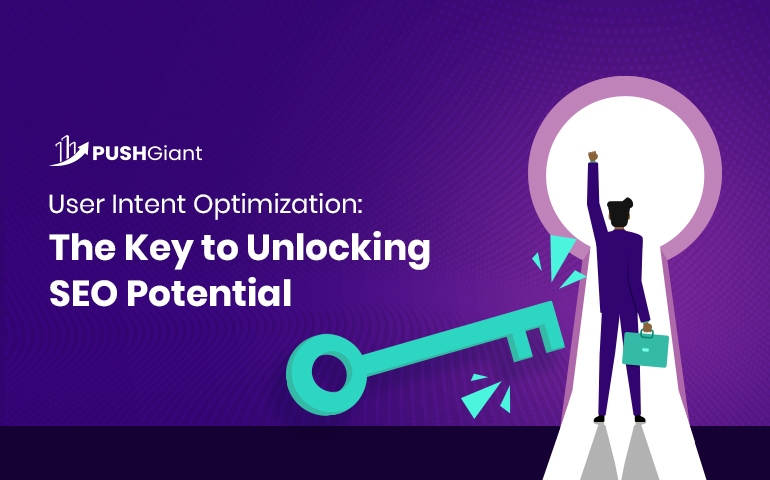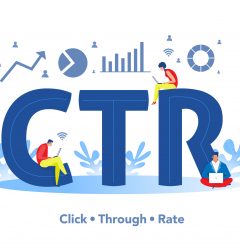28 Jun

Is your website not ranking higher on search engines despite your best efforts? The answer may lie in user intent optimization, a crucial aspect of SEO that’s often overlooked. By understanding and leveraging user intent, you can unlock your website’s full potential, reach your target audience, and drive more organic traffic.
In this article, we’ll explore what is user intent optimization, why it’s important, and how you can implement it into your SEO strategy. So let’s dive in and discover the power of user intent for website optimization!
Introduction to User Intent Optimization
First, let’s break down the term. ‘User intent’ refers to the underlying reason behind a user’s search query. By analyzing their search queries, behavior, and preferences, you can create content and marketing strategies that resonate with your audience’s interests and needs.
Incorporating user intent into your optimization efforts enables you to improve the relevance and quality of your content, leading to higher engagement, better rankings, and more conversions. It also allows you to stay ahead of the competition by anticipating and fulfilling the needs of your customers.
Main Types of User Intent
Next, let’s look at the four main types of user intent to help you create a more comprehensive optimization strategy.
Informational intent
Refers to queries seeking information or answers about a certain topic. These are often broad search terms such as “How does SEO work?”
Navigational intent
A user with navigational intent is looking for an exact website or page. They might type in a brand name or domain address to pull up the exact site they’re looking for.
Transactional intent
Indicates that the user is ready to take an action, such as making a purchase or subscribing to a service. It’s generally more specific than informational and navigational intent — for example, “tennis shoes for sale.”
Commercial investigation
When searchers are hunting for a product or service but they haven’t made a final decision yet. They typically scour the web for reviews and comparisons, weighing their options. Some examples: “best music streaming service,” “Spotify vs apple music,” “Soundcloud reviews”
In short, make sure that your optimization efforts cover what your users are trying to do to build a stronger online presence and grow your business.
Strategies for Implementing User Intent in Your SEO
With user intent optimization, you can help ensure that your content reaches the right people at the right time. Here are some strategies for implementing this type of optimization into your SEO campaigns:
1. Research and analyze user intent
Start by researching keywords related to your business and identifying the type of content that ranks high for those keywords. There are various sources you can use to gather data and understand the motivations, needs, and desires of your target audience, such as Google Analytics, customer surveys, social media, and SEO toolkits.
2. Create content that aligns with user intent
Once you have a clear understanding of user intent, create content that aligns with it. This means creating content that answers the questions and meets the needs of your target audience. Weave relevant keywords and phrases in your content to increase its visibility on SERPs.
3. Optimize your website for user intent
Make sure your website is user-friendly and easy to navigate. Furthermore, use clear and concise language, add headings and subheadings to break up content, and test your website across mobile devices.
4. Use data-driven insights to inform your SEO
Leverage intent data to develop and guide your SEO strategies. Analyze website metrics, such as bounce rates, time on page, and click-through rates to gain insights into user behavior. Take this information to optimize your content and website to best meet user needs.
5. Focus on long-tail keywords
Long-tail keywords are more specific and targeted than generic keywords. Focusing on long-tail keywords can help you better align your content with user intent and increase the visibility of your website on SERPs.
6. Test, refine, and repeat
Optimization is an ongoing process. Continuously test and refine your strategies based on user behavior and feedback. Use A/B testing and other techniques to help deliver the most value and relevance to your audience’s searches — lifting your rankings even higher.
Take Your SEO Results to the Next Level
User intent is key for improving your website’s online visibility. With the rise of voice search and mobile search, understanding what your visitors are looking for and providing them with relevant, quality content that meets their needs will give your business a competitive edge. In turn, this will lead to higher rankings, engagement, and conversions.
Start your free trial of PushGiant now! Our AI-powered SEO toolkit delivers deep insights to elevate your user intent optimization and accelerate results.







